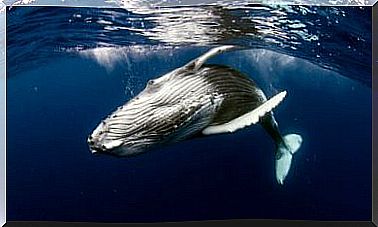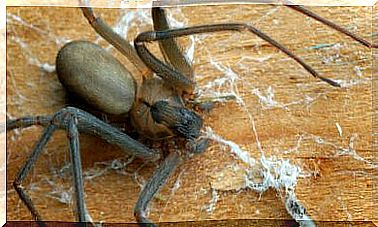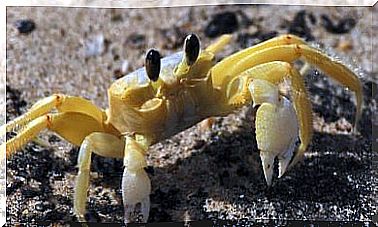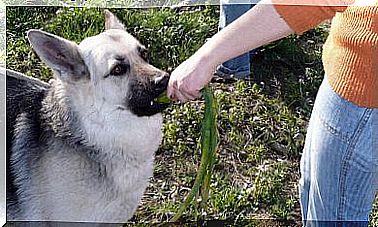Nephrurus Levis: How To Take Care
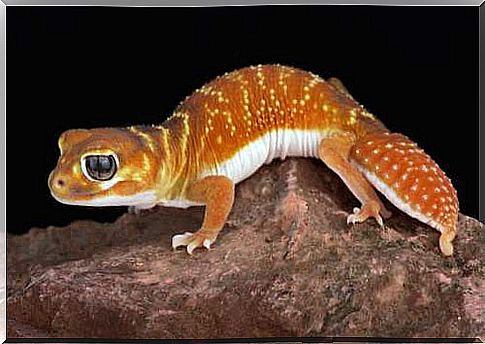
In addition to the leopard gecko, there are many other exotic reptiles that we can adopt as pets. This is the case with Nephrurus levis , whose specimens are better known as knob-tailed geckos.
Today we present one species in particular, Nephrurus levis , which is perhaps the most widespread of the genus in the exotic animal market. It is a small animal, but with truly amazing momentum and courage. Read on if you want to know how to care for the three-headed knob-tailed gecko.
The Nephrurus family, an exotic species
First of all, it is worth underlining that Nephrurus is a genus that includes 10 species recognized today. Among the most common we find:
- Nephrurus amyae : the largest of the genus. It can be easily distinguished because it is reddish in color and has a very small tail.
- Nephrurus wheeleri : small in size and with an unusual character, this reptile is characterized by the black stripes it has on its body.
- Nephrurus levis : darker orange in color but with lighter stripes, this species also differs easily from the others.
These geckos are endemic to Australia, so the care they need is more or less the same for everyone. Our guide will be valid for all three species described above, but we recommend that you consult your veterinarian or pet shop specialist to clarify any doubts before purchasing a specimen.
None of the listed species are included in CITES – a convention for the protection of threatened animals for sale – nor are their natural populations in sharp decline. Therefore, no special permission is required to adopt one of these geckos as a pet.
Despite this, we must be careful, because the buying and selling of species removed from their natural environment is very widespread. All the knob-tailed geckos we’ve found for sale so far have been bred in captivity, but that doesn’t mean it couldn’t happen. It is always best to request relevant documents regarding captive breeding before purchasing an exotic species.
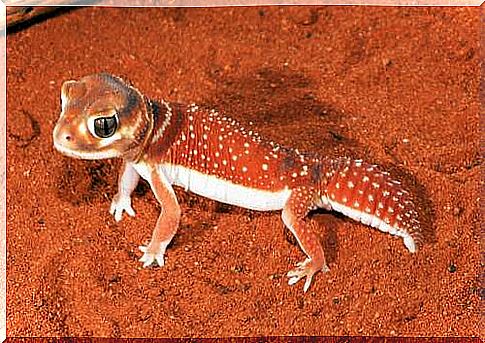
Nephrurus levis: how to care for them in captivity
These species live in different environments typical of the Australian landscape, especially in arid and semi-arid regions. With this brief premise in mind, we will tell you how to take care of the Nephrurus levis species , and in general all the geckos in its family.
Your gecko’s terrarium
The terrarium does not have to be very large, because these geckos have to live alone given their marked tendency to territoriality. A terrarium measuring 40x30x30 centimeters in width, height and length will be more than enough for a specimen. However, the more space your reptile has, the better.
These animals also thrive in plastic structures, but we believe purchasing a glass terrarium specially designed for reptiles is the best option. These types of terrariums have effective ventilation systems and, moreover, thanks to the glass, you can always keep the animal under control.
As for the base, we recommend compact sand, especially calcareous sand (CaCo3), as the animal could accidentally ingest it. This will avoid the dreaded gastrointestinal obstruction ailments that many desert reptiles suffer from.
For the rest, the terrarium must have two shelters, one in the warm zone and the other in the cold zone. You can place some large stones or hollow trunks to promote environmental enrichment and certainly a small container with water to drink should not be missing.
Environmental requirements of Nephrurus levis
Below, you will find some advice on the climatic conditions necessary to keep this species healthy and happy. Here it is:
- Temperature : There must be a temperature gradient in the terrarium. To do this, you will need to place a thermal blanket behind the glass and under the terrarium. The warm side should always be around 30-31 ° C and the cold side at a minimum of 23 ° C.
- Humidity : we are talking about an animal that lives in the desert, so high humidity in the terrarium is a parameter to be avoided. Putting a small container of drinking water for the pet is more than enough, but you can also sprinkle some water into the cold area a couple of times a week.
- Lighting : This species does not need special lighting, but it does need natural light to survive.
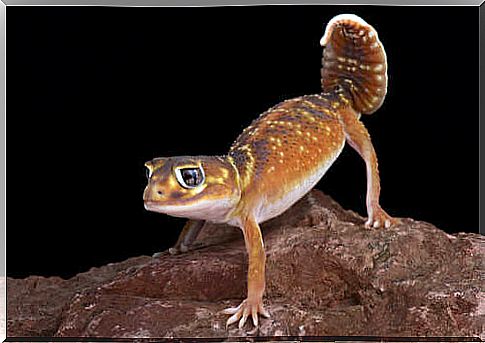
The diet of the knob-tailed gecko
The Nephrurus are exclusively insectivores, so their diet is based primarily on crickets, beetles and worms. An adult eats about four times a week, and in at least one of these sessions the prey should be sprinkled with calcium and vitamin D3. This will allow the animal to grow strong and healthy.
These geckos hunt only through visual stimuli, which is why all prey presented must be alive and active. If the insect is not in good shape or does not move much, the animal will easily lose interest and end up not eating it.
As we have seen in this article, Nephrurus levis is a very fascinating exotic species that is quite easy to care for. If you keep the temperature high enough, the body of this cute reptile will be able to regulate itself on a thermal level and you can enjoy it as a pet for about 10 years.
